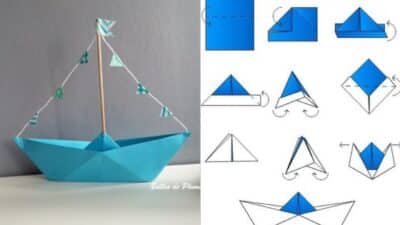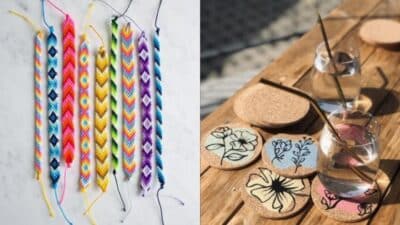Creating your own DIY mirror frame is a simple way to refresh any room and give your mirror a personalized touch. You don’t need to spend much or have expert skills to build a frame that fits your style perfectly. By choosing materials like wood, metal, or even upcycled items, you can craft a unique frame that turns a plain mirror into a statement piece.
Whether you want a rustic look, something modern, or bright and colorful, DIY mirror framing gives you full control over the design. You only need a few basic tools and some creativity to get started, and there are plenty of easy methods to match your experience level. This project not only saves money but also allows you to add personal flair to your home décor.
You’ll find inspiration from simple wooden frames to more intricate designs using items like trim or even decorative accents like rhinestones. With the right guidance, your DIY mirror frame can be a fun and rewarding project that transforms your space beautifully.
Key Takeways
- DIY mirror frames let you customize your mirror style easily.
- Basic tools and materials are enough to start creating your frame.
- You can use many creative ideas to fit your home’s look.
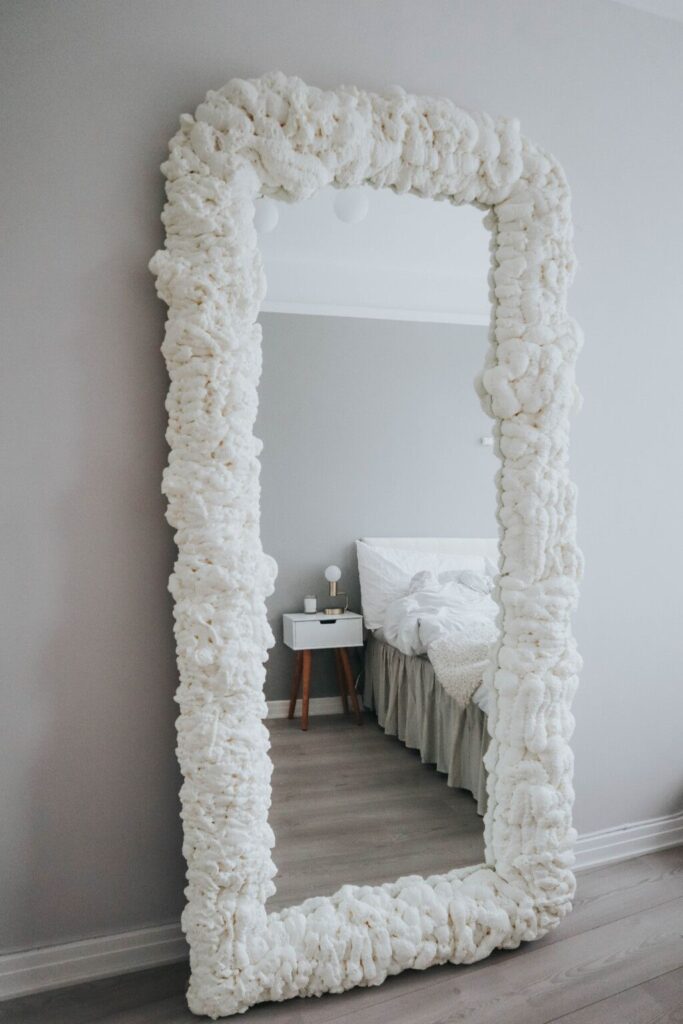
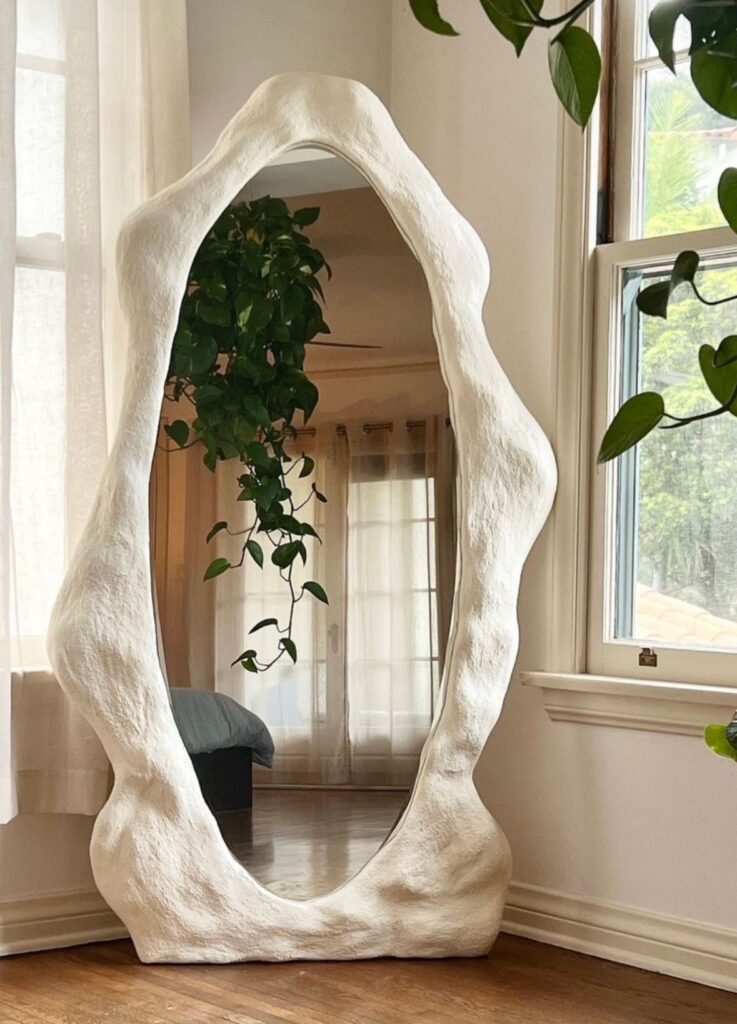
Why Build a DIY Mirror Frame?
Building your own mirror frame lets you control design, cost, and materials. You can create a frame that fits perfectly in your space, matches your style, and upgrades an ordinary builder-grade mirror with ease. This approach offers clear benefits compared to buying pre-made frames.
Advantages Over Store-Bought Frames
When you build a DIY mirror frame, you avoid the common issues of store-bought frames like limited size options or generic styles. Many off-the-shelf frames don’t fit builder-grade mirrors exactly, which can leave gaps or require awkward adjustments.
DIY frames let you choose quality materials and finishes, ensuring durability and a custom look. You also skip the markup costs attached to branded frames. Plus, the satisfaction of creating something by hand adds a personal touch that you won’t get from a mass-produced product.
Customization for Different Spaces
You get total control over the style and size of your mirror frame. Whether you want a sleek modern look with thin wood trim or an elaborate rustic frame with molding and onlays, it’s your choice. This flexibility means your frame can perfectly complement your bathroom, hallway, or bedroom.
You can also design the frame to work with specific mirror clips or to fit unique wall dimensions. This is especially helpful if you’re enhancing a builder-grade mirror that came plain. Custom color, texture, and detailing mean the frame reflects your personal taste and the room’s vibe exactly.
Budget and Material Flexibility
A DIY mirror frame lets you decide how much to spend. You can use inexpensive lumber like pine for a simple frame or fancy wood like oak or cherry for a richer look, depending on your budget.
Materials beyond wood are also an option—molding, trim, or even decorative elements like rhinestones can create a luxe effect without breaking the bank. Thrifted or dollar store mirrors combined with creative framing can transform your space affordably.
Overall, you can adjust your supplies and techniques to fit your budget while still producing a stylish frame you’ll enjoy every day.


Essential Tools and Materials
To build your DIY mirror frame, you’ll need to choose the right wood trim and boards, pick suitable paint and adhesives, and prepare safely. Having the correct materials and tools upfront will make your project smoother.
Choosing the Right Trim and Boards
Select trim and boards that match the style and size of your mirror. Common choices include pine for easy carving, oak for durability, or poplar if you plan to paint the frame. Measure your mirror carefully to determine the lengths needed.
Look for 1×4 or 1×3 lumber for your frame’s width. Mitre cuts at 45 degrees will join the corners cleanly. Some prefer pre-primed wood to save painting time. Avoid warped boards, as they affect the frame’s fit and appearance.
Selecting Paint, Adhesives, and Finishes
For finishing, mirror spray paint works well on glass parts if you want to add decorative backing inside the frame. For the frame itself, gold craft paint can create a classic, elegant look.
Use wood glue alongside nails or screws when assembling your frame for extra strength. A clear polyurethane or acrylic topcoat will protect paint and wood from moisture, especially for bathroom mirrors.
Safety Tips and Preparation
Wear safety glasses and a dust mask when cutting or sanding wood to protect your eyes and lungs. Keep your workspace clean and well-ventilated, especially if using spray paint or strong adhesives.
Check that your saw blades are sharp and your tools in good condition to avoid accidents. Measure twice before cutting to reduce mistakes and material waste. Taking these steps helps ensure a safe, efficient build.
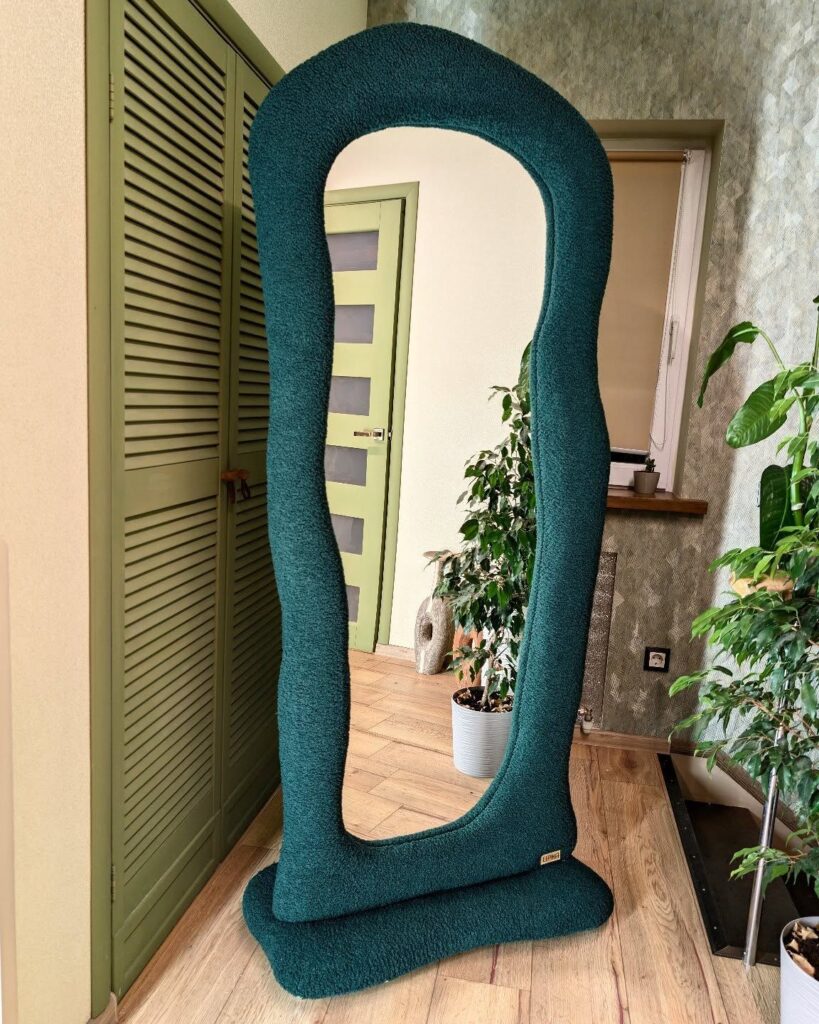
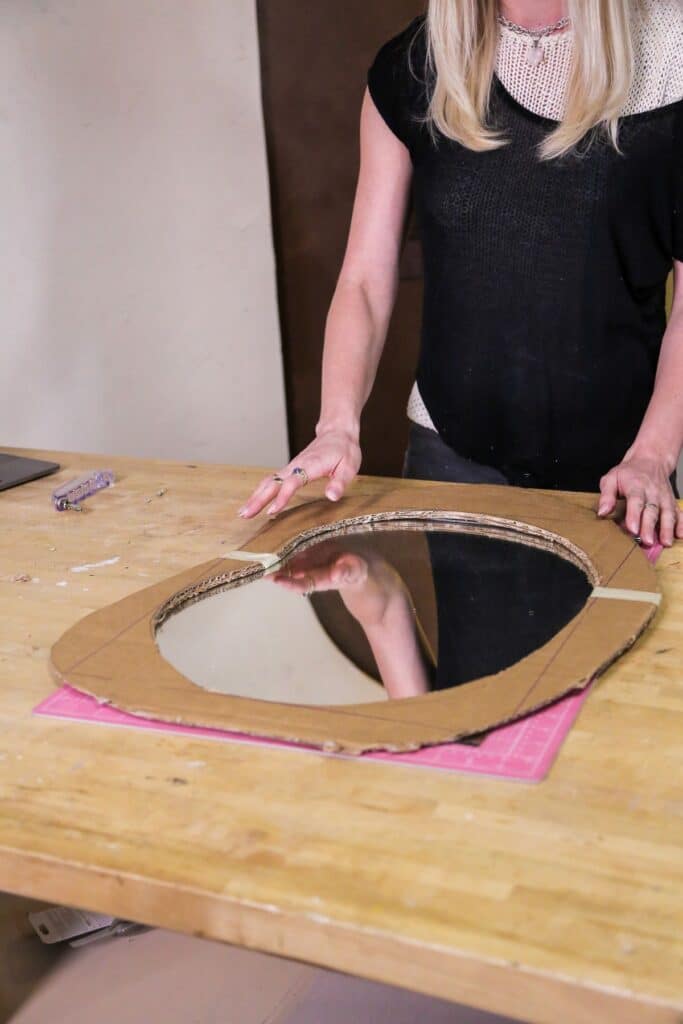
Step-by-Step DIY Mirror Frame Tutorial
This project breaks down into three main parts: getting your measurements right, assembling the frame, and finishing it so it looks polished. Paying close attention to each step helps ensure your mirror frame fits perfectly and enhances your space.
Measuring and Planning
Start by measuring the dimensions of your mirror precisely. Measure the height and width of the mirror, then add twice the width of the frame material to each dimension. This helps you calculate the exact size of the outer frame.
Decide on the frame style and material now. Common choices include pine, oak, or pine for a rustic look. Make a list of tools and materials you’ll need, such as a miter saw, wood glue, clamps, and nails or screws.
Sketch your frame design on paper. This helps visualize corners and miter cuts at 45 degrees or butt joints to match your skill level.
Frame Assembly Techniques
Cut your frame pieces according to your measurements. For a clean look, use mitered corners cut at 45 degrees. If you’re new to this, butt joints are simpler and still sturdy.
Use wood glue on each joint, then clamp the pieces together firmly. Reinforce with finishing nails or small screws for extra strength. Check that corners are square with a carpenter’s square before the glue dries.
Sand the frame edges and surfaces smoothly. This step helps the stain or paint adhere well and prevents rough spots.
Mounting and Finishing Touches
Attach the finished frame to the mirror using mirror adhesive or small finishing nails driven carefully into the frame. Double-check that it’s flush and secure.
For finishing, paint or stain the frame to match your decor. You can seal it with a clear polyurethane to protect against moisture, especially in bathrooms.
Add wall hooks or brackets to the back for mounting. Make sure they are strong enough to support the mirror’s weight safely.
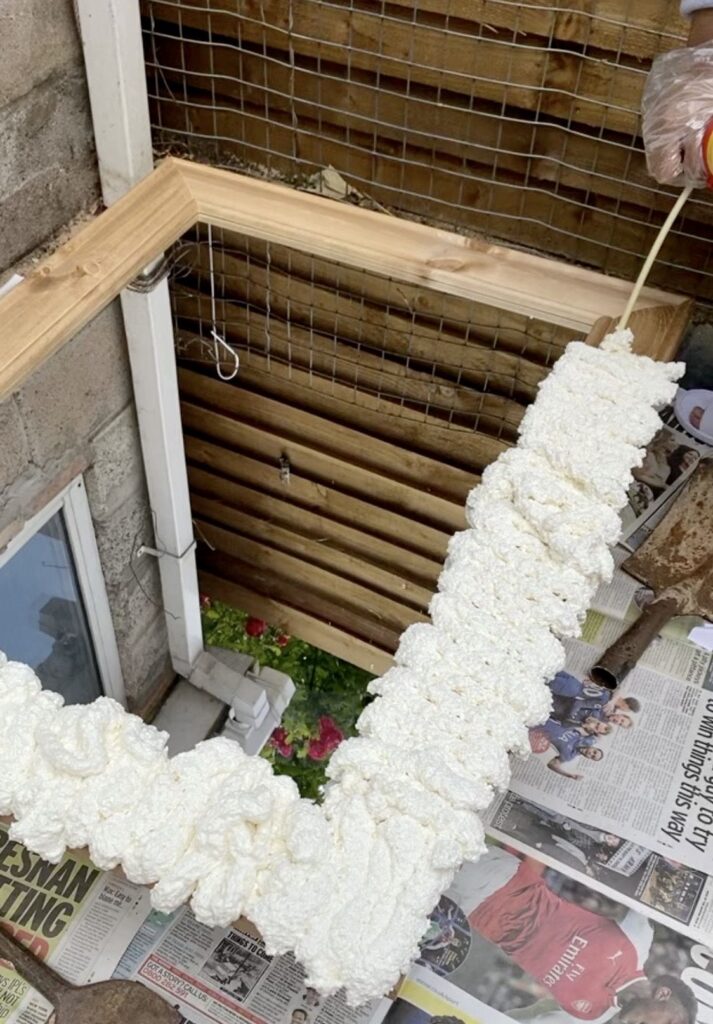
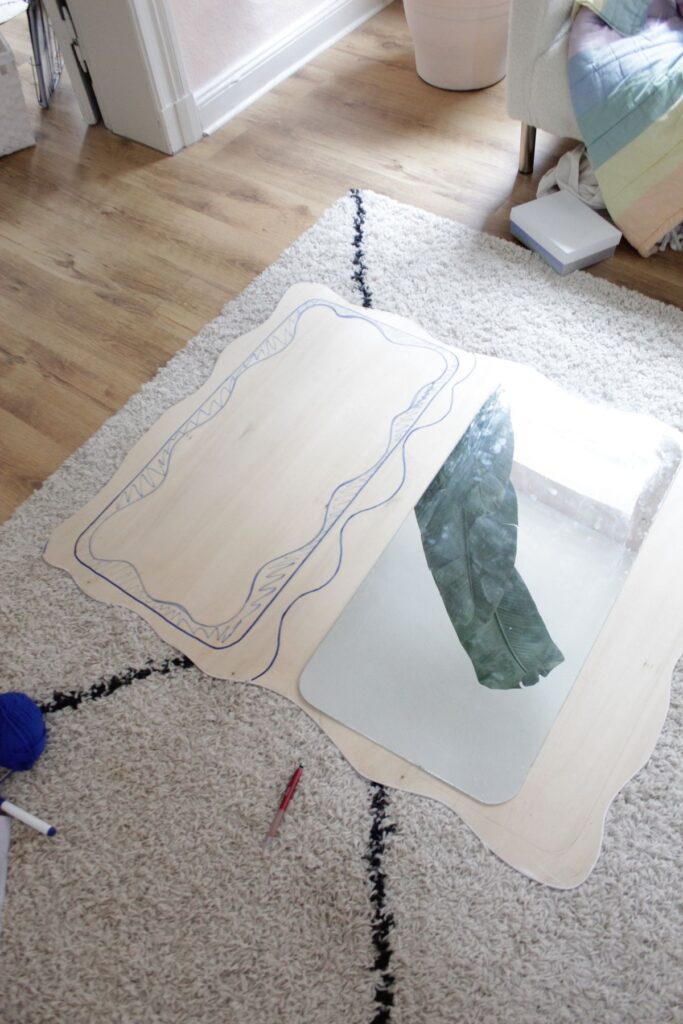
Creative DIY Mirror Frame Ideas
You can bring your personal style to any mirror with some simple materials and a clear vision. Whether you prefer sleek lines or textured details, there are many ways to make your mirror frame a standout feature in your space.
Modern and Minimalist Styles
For a clean, modern look, focus on simple shapes and neutral colors. Using materials like metal strips, painted wood, or even mirrored tiles can create a minimalist frame that complements your existing decor.
Try painting your frame with matte black or white craft paint for an understated effect. Thin profiles and straight edges work best here, so avoid heavy ornamentation. You could also explore floating frame ideas, where the mirror appears suspended within the frame for added depth.
Minimalist styles are also great for smaller spaces since they don’t overwhelm the room. Keep your design neat and functional with uniform textures and consistent finishes.
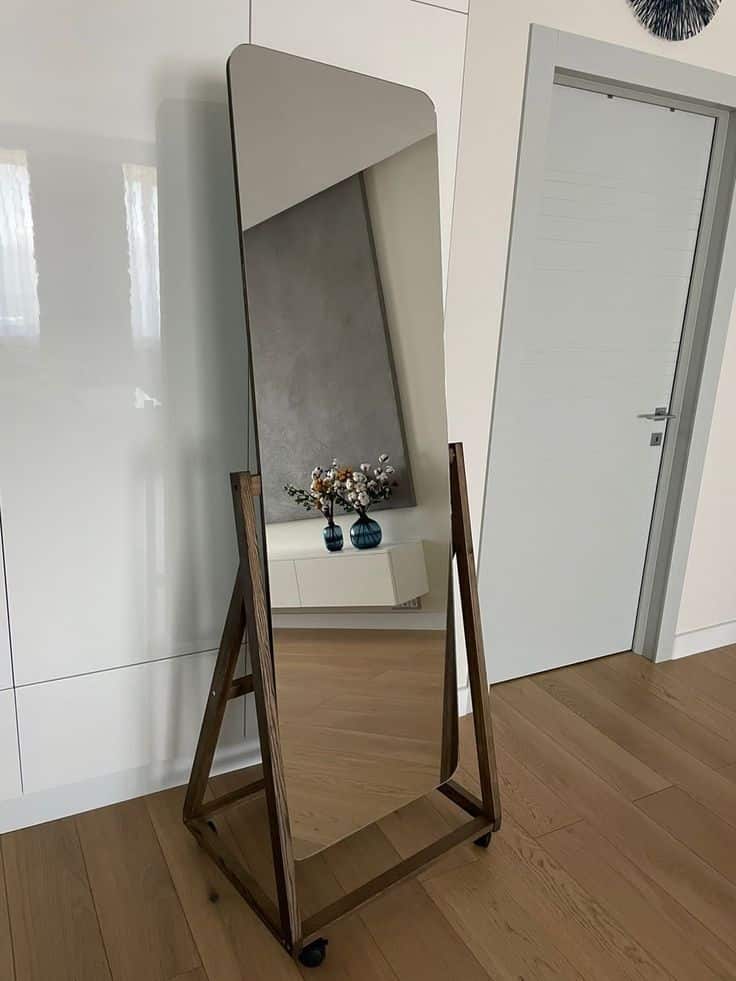
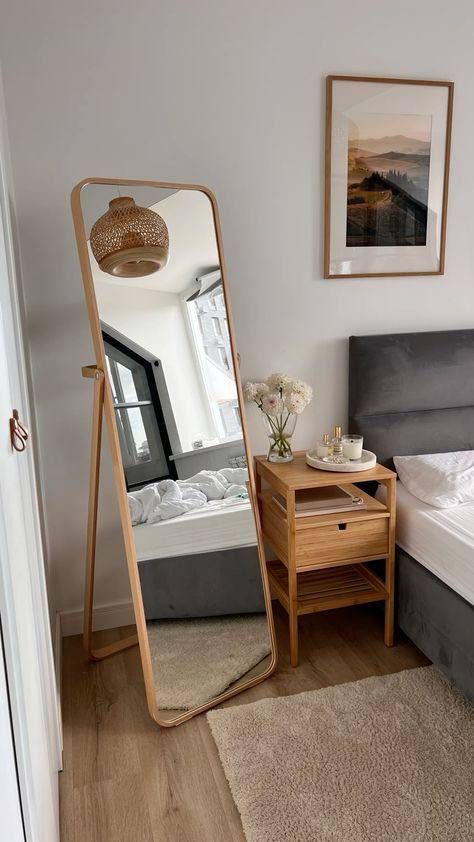
Rustic and Carved Wood Frames
If you like natural textures, carving your own wood frame is a very rewarding project. Use reclaimed wood or driftwood to add rustic charm without breaking the bank.
You can hand carve simple patterns or grooves on soft woods like pine to give your mirror a handcrafted look. Another option is assembling pieces of rough-cut wood for a natural, uneven edge. These details bring warmth and character to the frame.
Sealing the wood with a clear varnish keeps it durable while preserving the texture and grain. A carved wood mirror frame pairs well with farmhouse or country-style interiors.
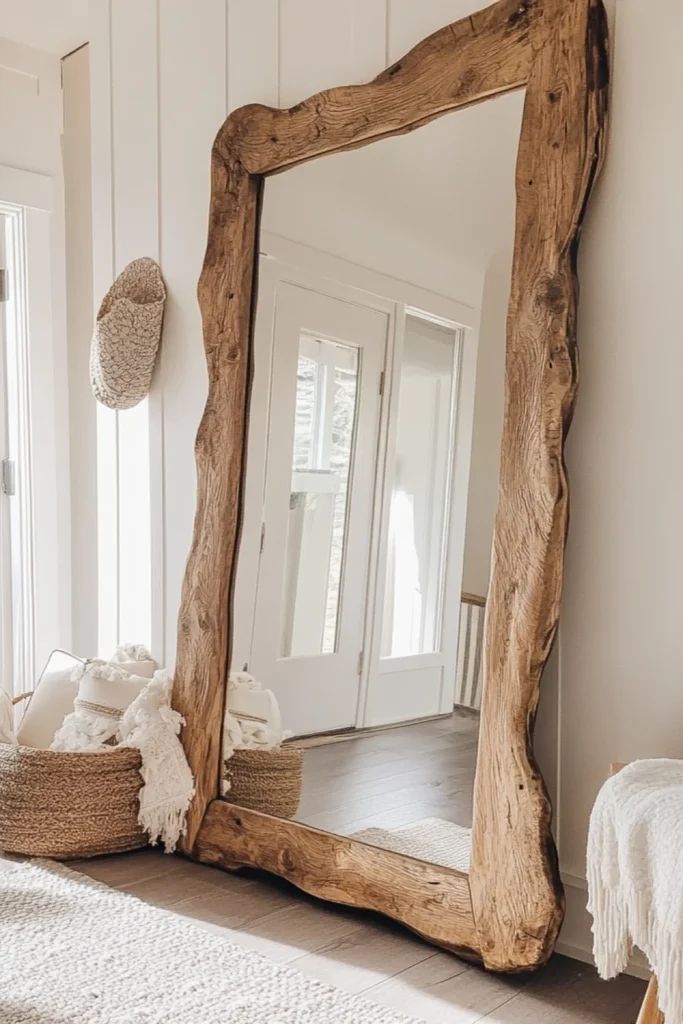
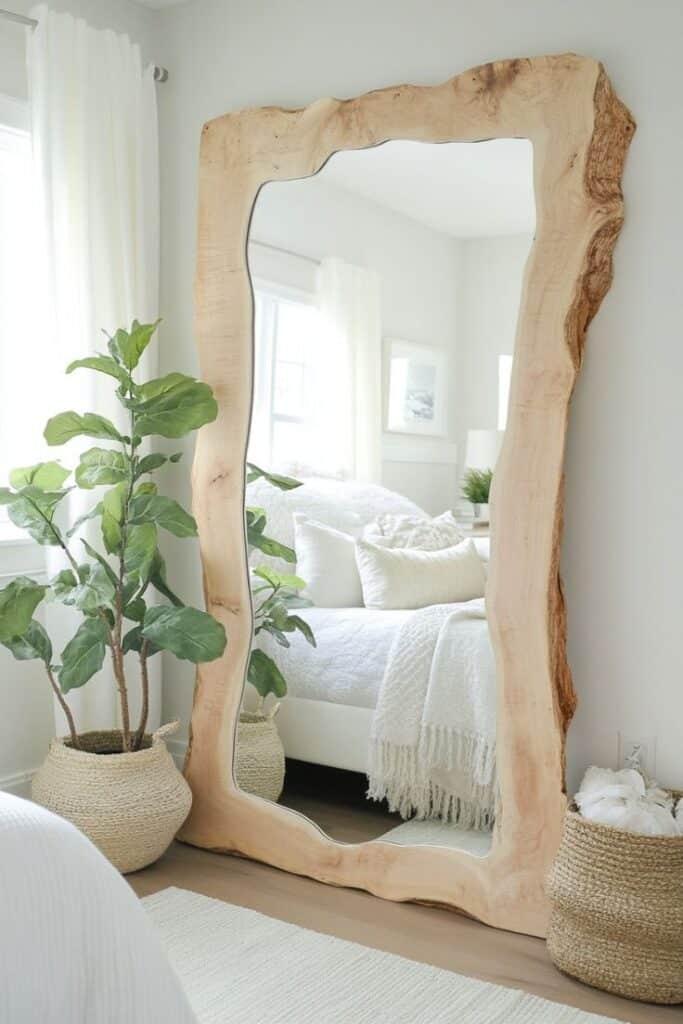
Fringe, Tassel, and Bohemian Accents
Adding fringe or tassels can instantly soften your mirror and give it a relaxed, bohemian vibe. Use natural fibers like jute, cotton, or yarn that you can weave or glue around the edge of the frame.
You might wrap rope or twine around the frame entirely or create fringe along the bottom edge for a unique bohemian tassel mirror. Bright colors or natural earth tones both work well depending on your style.
This look pairs great with flower mirror accents or textured wall hangings, adding a fun, tactile element to a room. It’s an easy craft that requires minimal tools and materials but offers a big style lift.
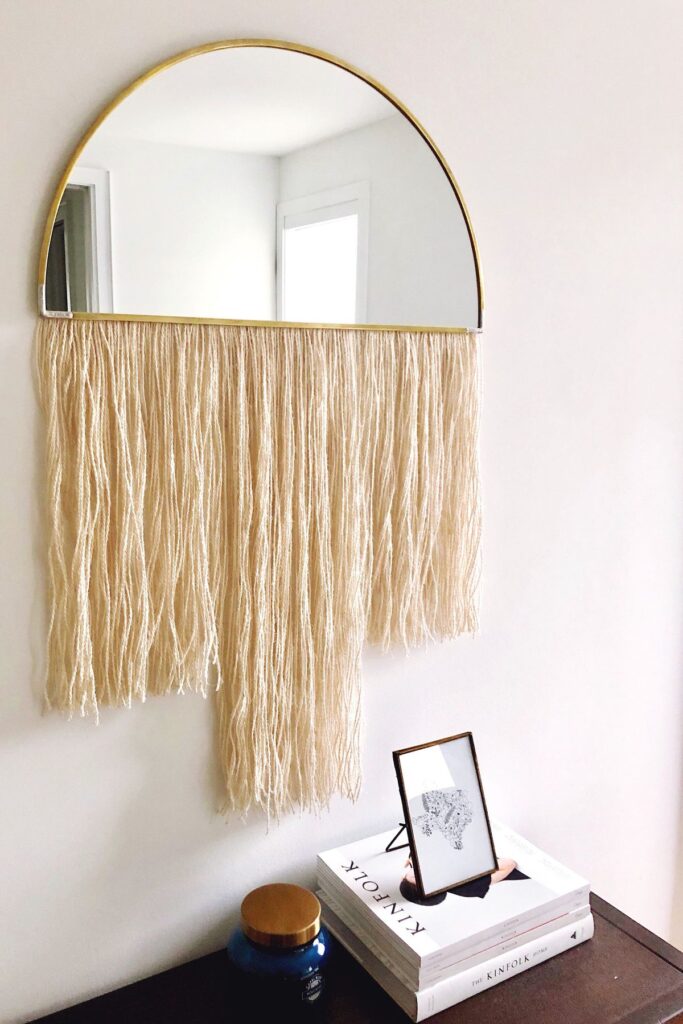

Painted and Gilded Mirror Designs
Adding paint or gilding allows you to customize your mirror frame with bold colors or metallic accents. Use gold craft paint to create a gilded mirror frame that looks elegant and eye-catching.
You can apply stencils, stripes, or abstract shapes to personalize your painted mirror frame. Acrylic paints work well for this and dry quickly.
For gilded effects, layering gold or bronze leaf sheets or using metallic spray paints can give your frame a vintage or glam touch. These finishes pair beautifully with neutral walls, allowing the mirror to function as a statement piece.
Painting your mirror frame also lets you refresh an old frame, giving it new life with colors that match your current décor.
Unique and Trendy Frame Inspirations
You can transform any plain mirror into a stylish statement piece by choosing frame designs that bring personality and flair to your space. Whether you want something modern, artistic, or with a hint of vintage charm, there are plenty of creative styles to explore.
Holographic and Holographic Frame Styles
Holographic frames use reflective, iridescent materials that shift colors as light hits them. These frames add a futuristic and playful vibe to your mirror. You can achieve this look using holographic vinyl films or paint for a shimmering effect.
These frames work best in rooms where you want to add a pop of brightness and movement. They pair well with minimalistic décor because the frame itself acts as a focal point.
You might use a sleek, thin holographic frame to keep it subtle or go bold with wide, textured edges that catch the eye from across the room.

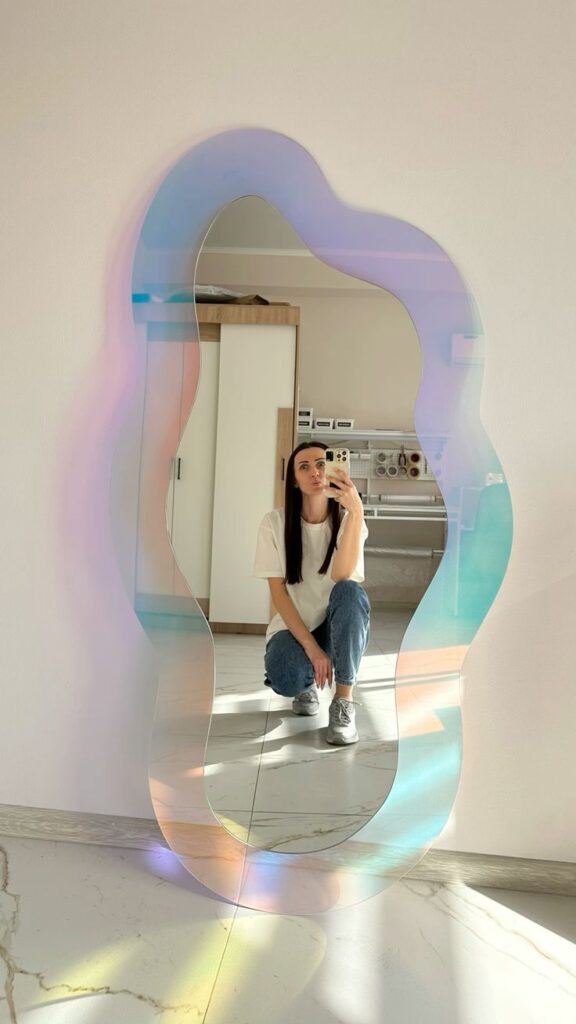
Sunburst and Statement Mirrors
Sunburst mirrors are timeless and bring dynamic energy with their radiating frame design. Your frame can be made from wood, metal, or even recycled materials styled into rays to mimic the sun.
They work great above mantels or in entryways, adding a strong visual accent. You can customize the sunburst by varying the length and thickness of the “rays” for your preferred look.
Statement mirrors often have oversized or unusually shaped frames—think geometric bursts or layered spokes—that easily become conversation starters in any room.
Arched, Two-Toned, and Squiggle Mirrors
Arched mirror frames soften a room by introducing gentle curves. You can build an arched frame from wood or metal for a graceful, classic look. This style complements both modern and traditional interiors.
Two-toned round mirror frames combine contrasting colors or finishes on the same frame, adding depth and interest. For instance, a black outer ring paired with a gold inner edge creates a chic and sophisticated effect.
Squiggle mirrors feature irregular, wavy frames that add a whimsical touch. Their playful shapes make them ideal for eclectic or artistic spaces.

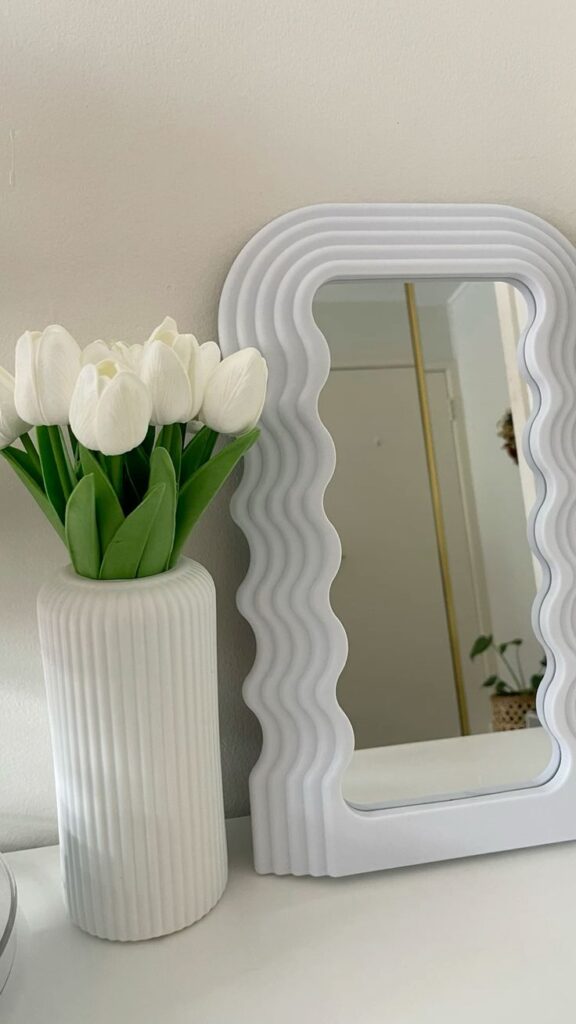
Vintage, Industrial, and Stained Glass Looks
French vintage mirrors feature distressed wooden frames with ornate details like floral carvings. If you want timeless elegance, a handmade vintage-style frame can add warmth and history to your décor.
Industrial mirrors typically use metal frames with raw or matte finishes, sometimes incorporating rivets or grid patterns. Window pane mirrors, a popular industrial style, segment the mirror surface with thin metal or wood strips resembling old factory windows.
Stained glass mirror frames add color and texture through embedded colored glass pieces. These frames are a creative way to bring in art and light, reflecting colorful patterns around your room.
- 336shares
- Facebook0
- Pinterest336
- Twitter0


